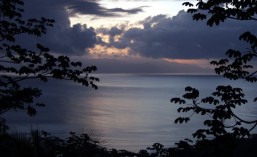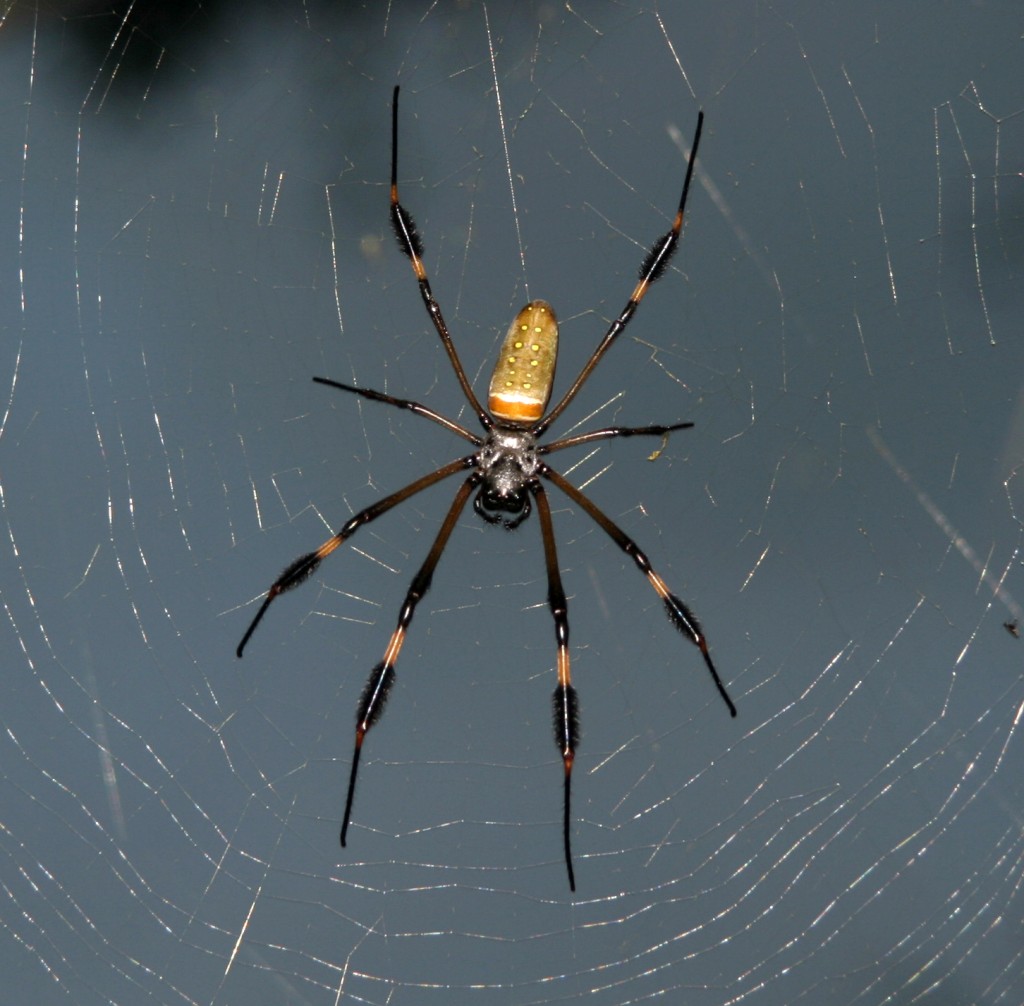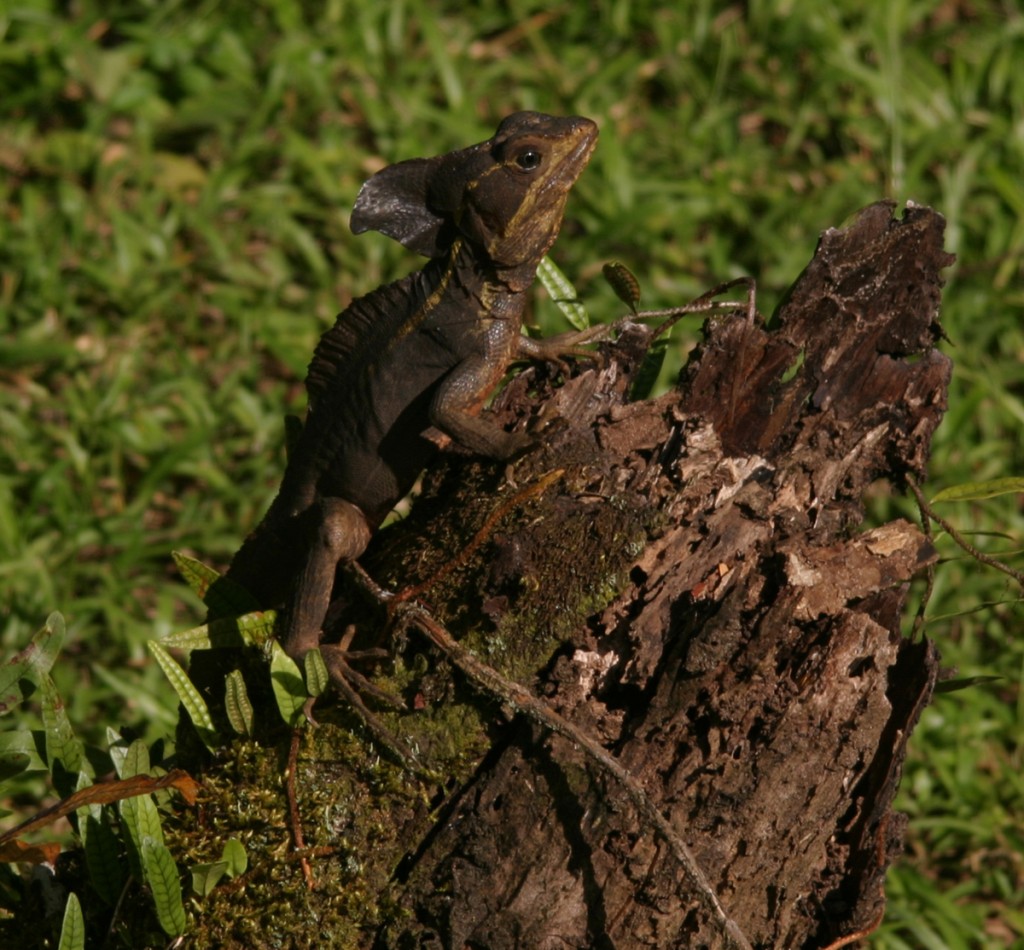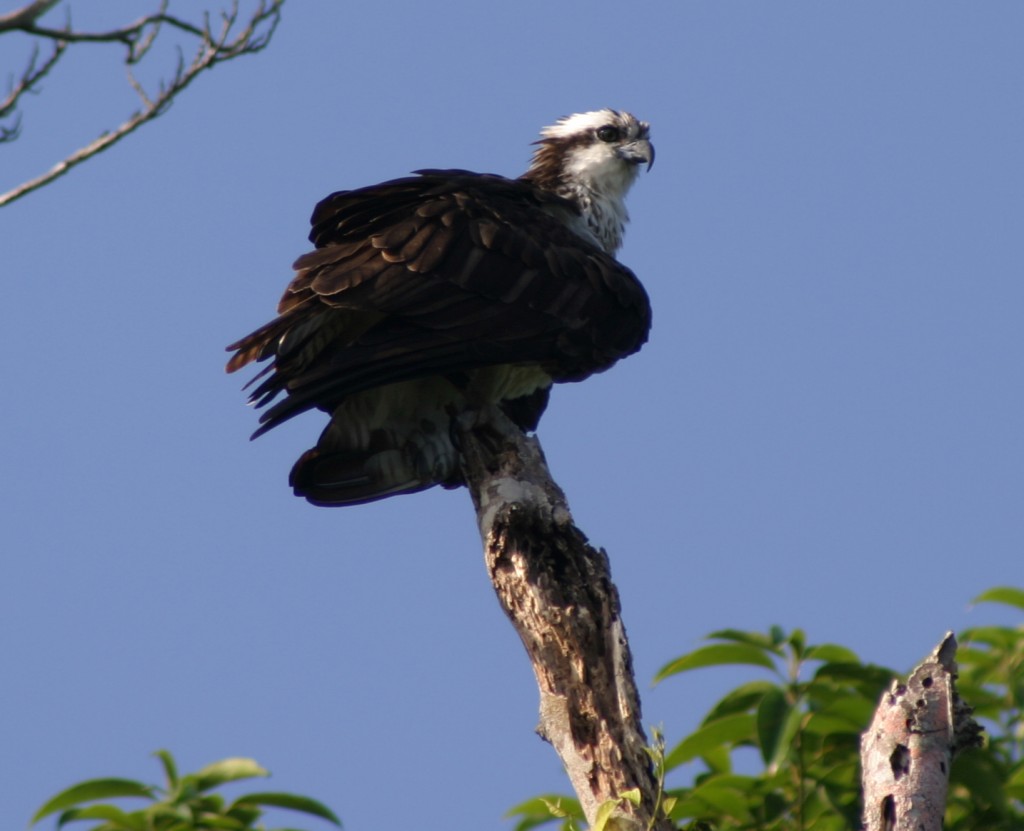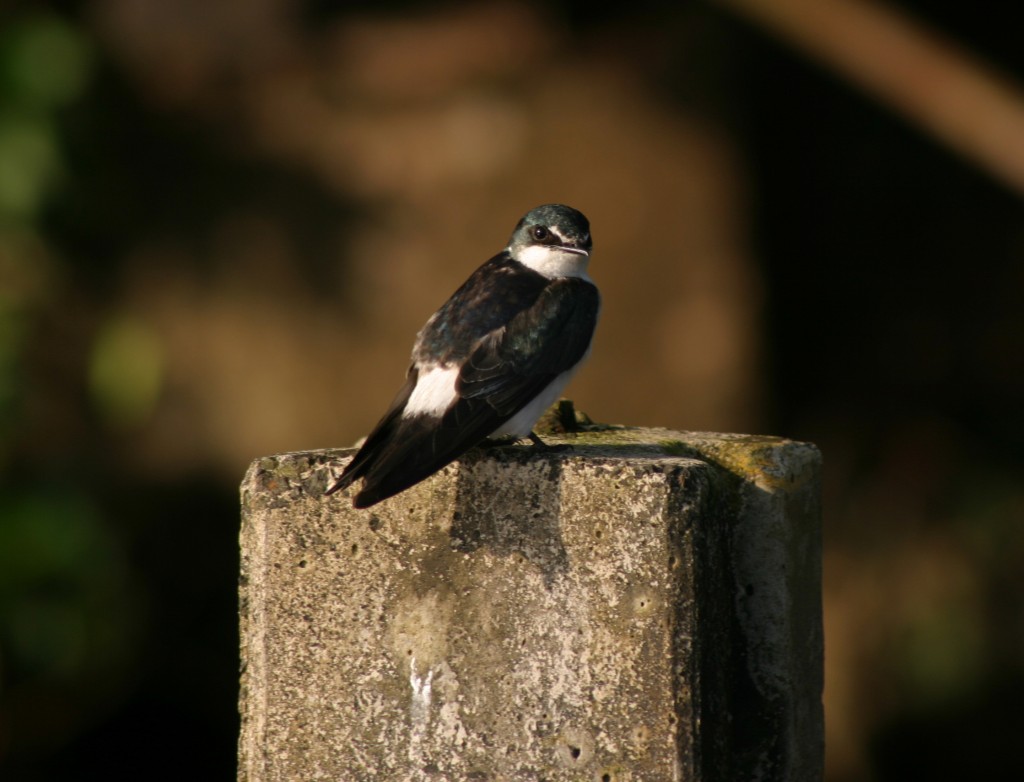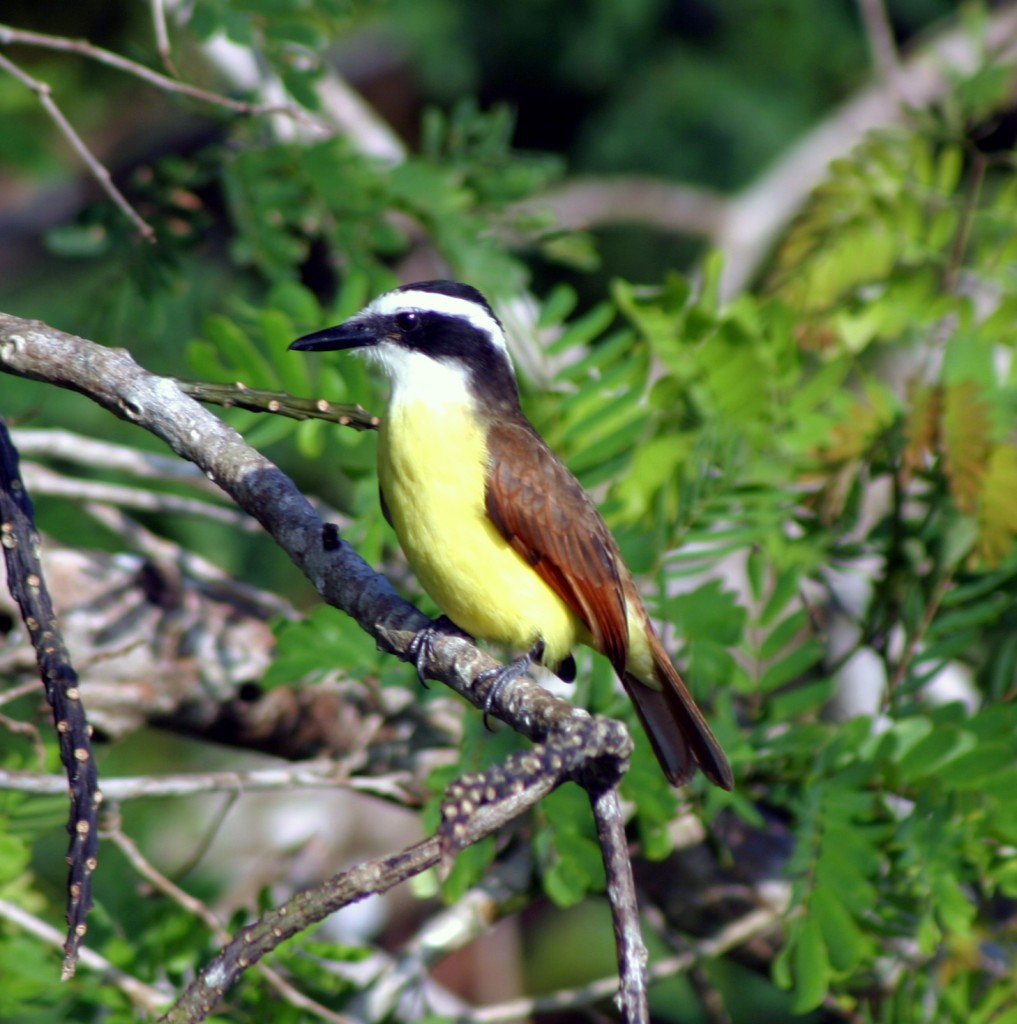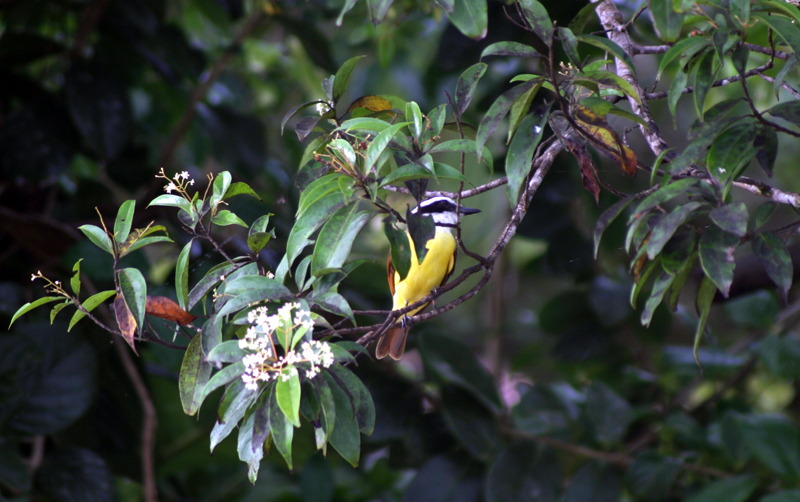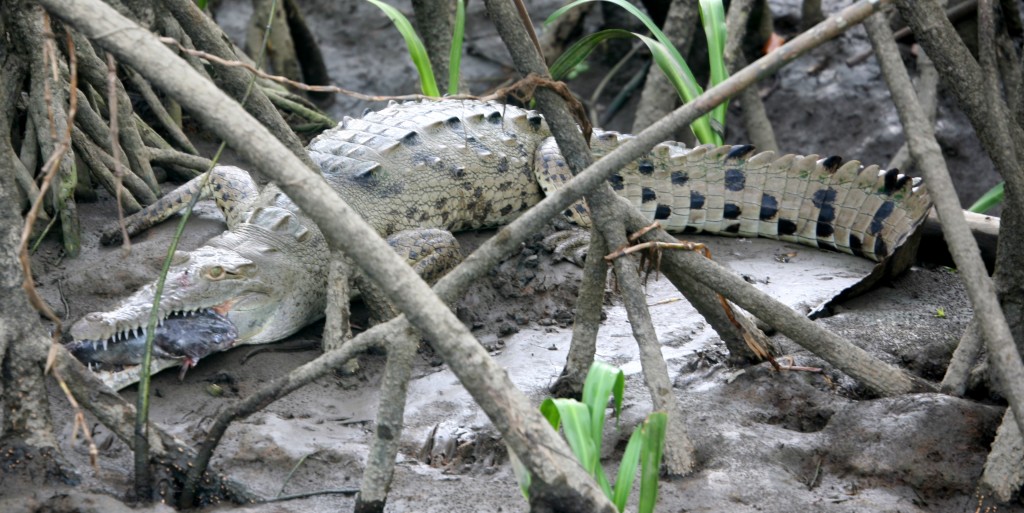
Apparently stuffed, a motionless American Crocodile holds his next bite – a large fish – in his toothy jaws.
Crocodilians, along with birds, are the closest living relatives of the dinosaurs. The American Crocodile can be found in large rivers and streams of Costa Rica, and often in the tidal, brackish water where rivers meet the sea. This crocodile was resting on a flat of mud one evening near the mouth of the Tortuguero River.
All media is copyright costaricawildlife.net, 2013.
